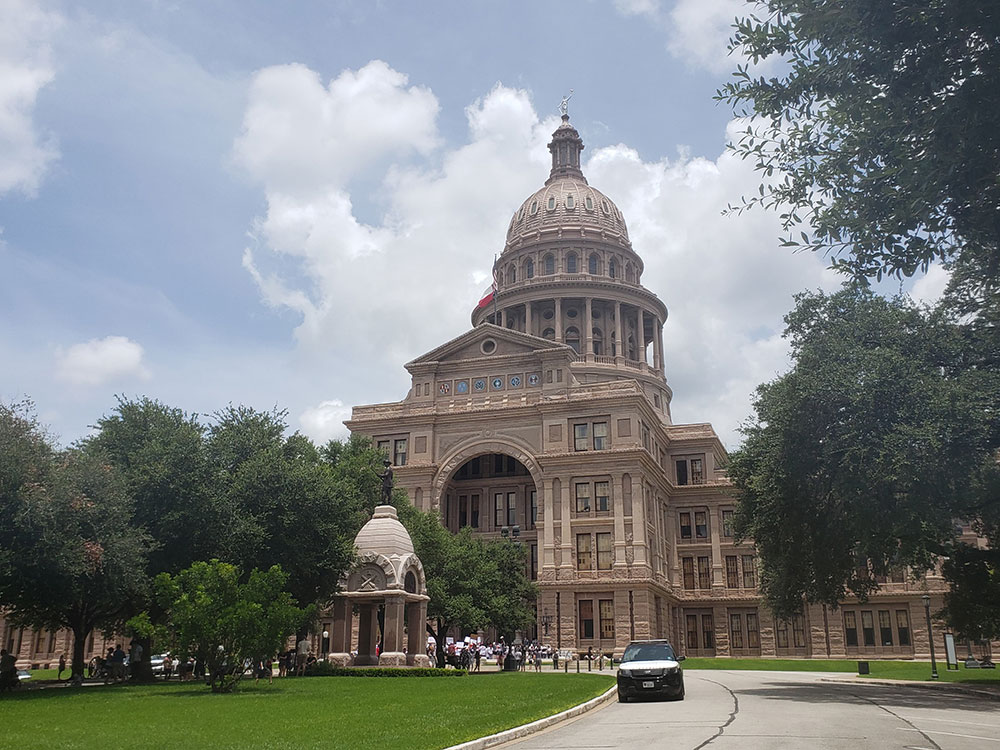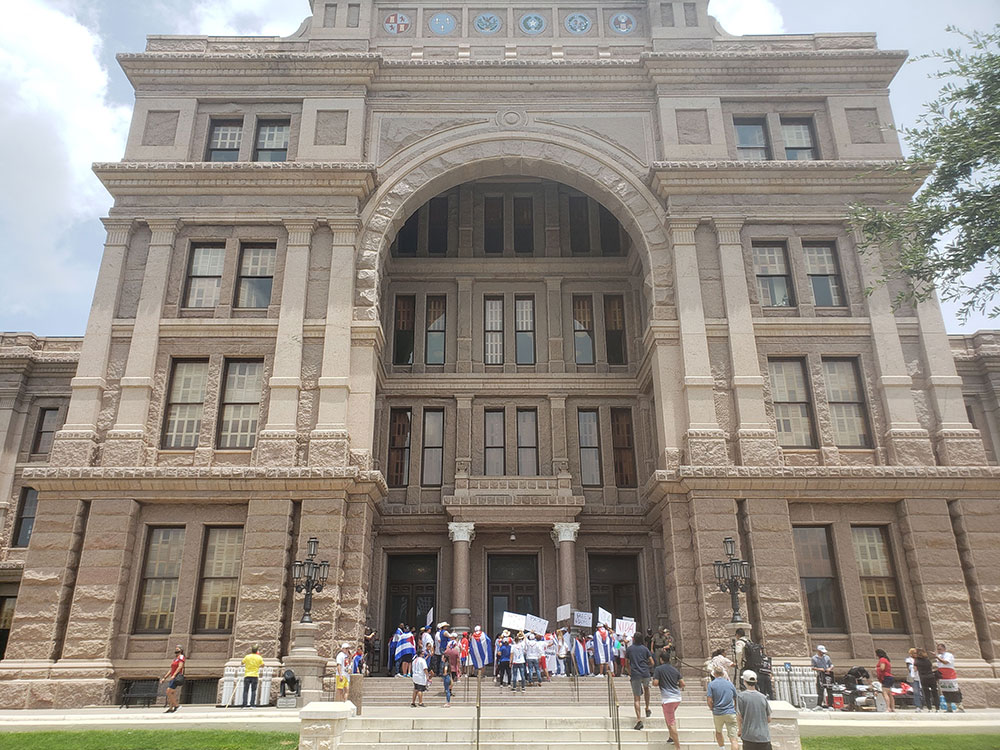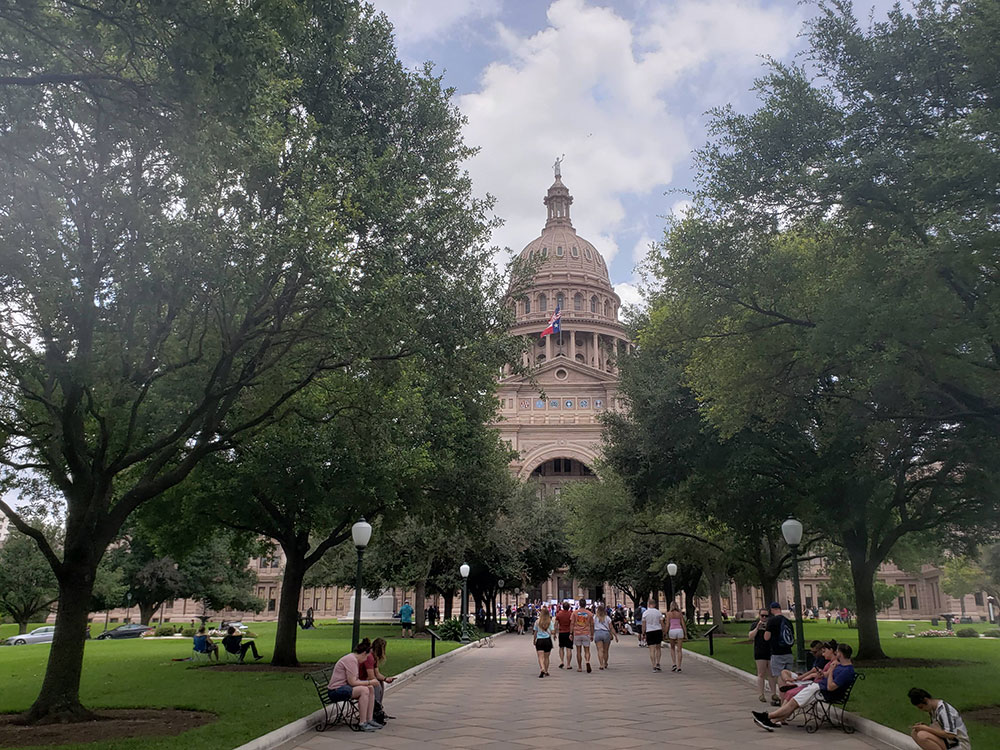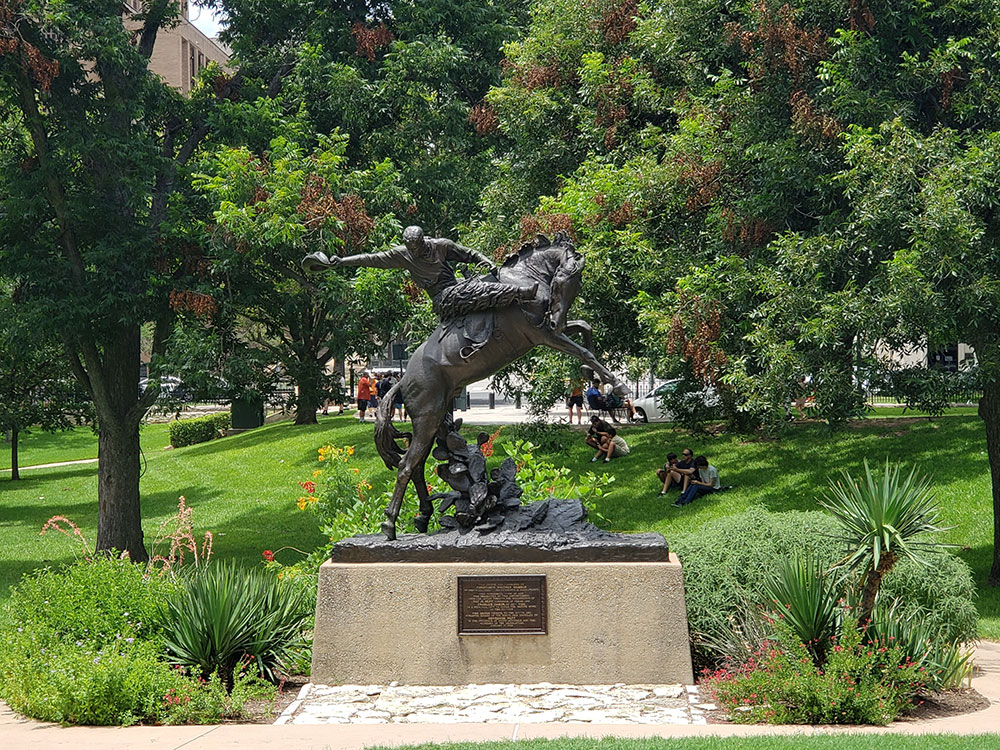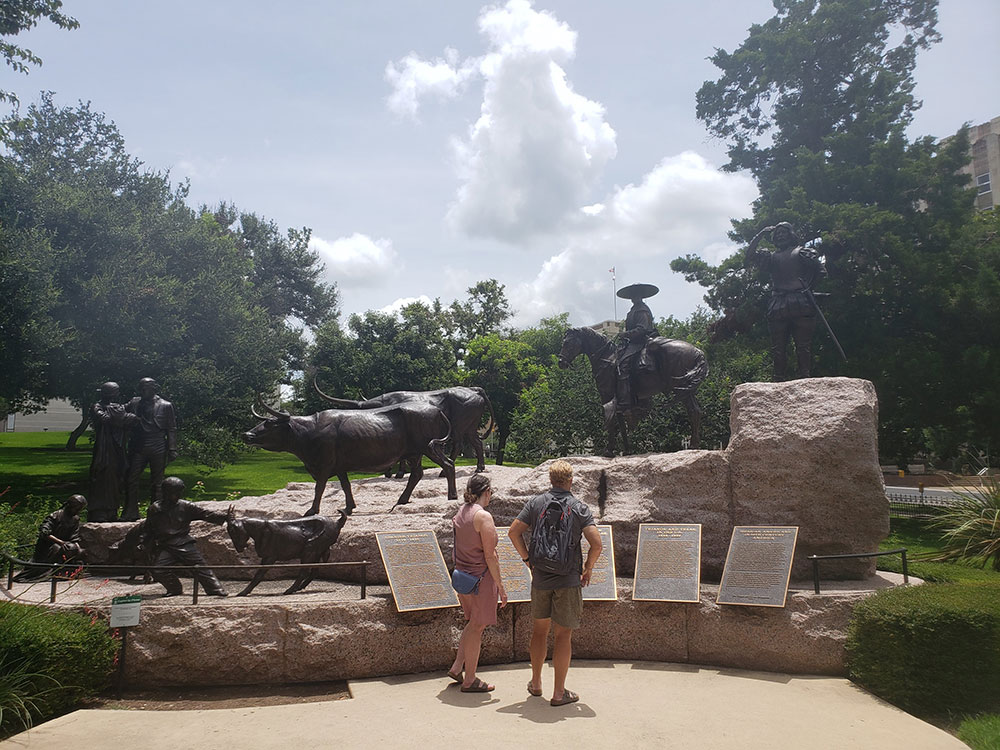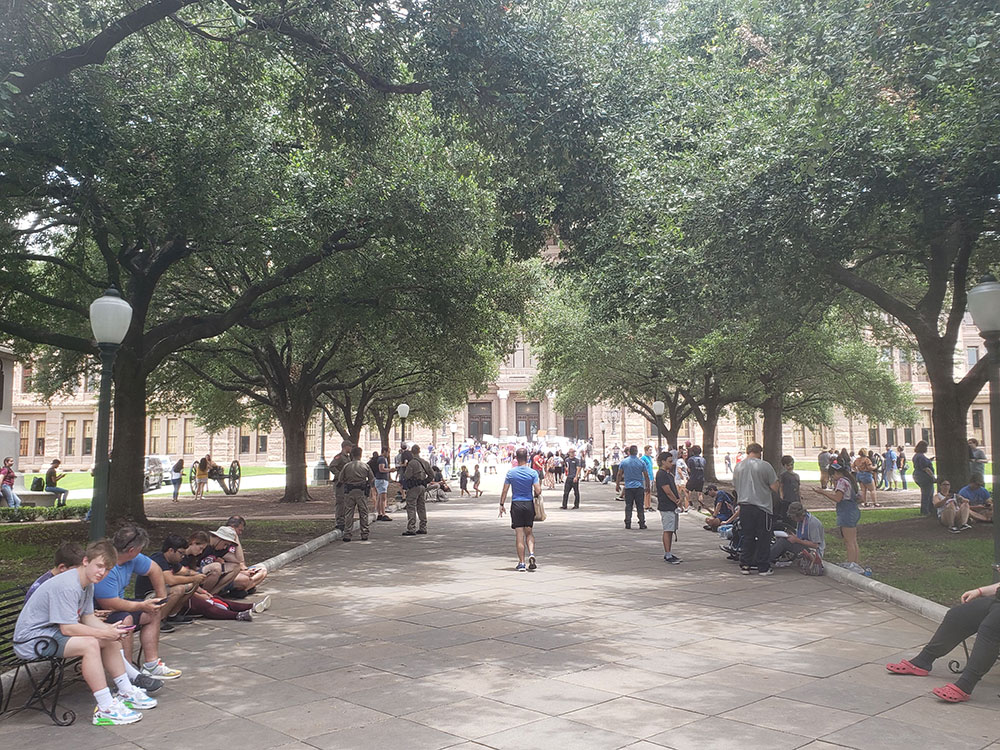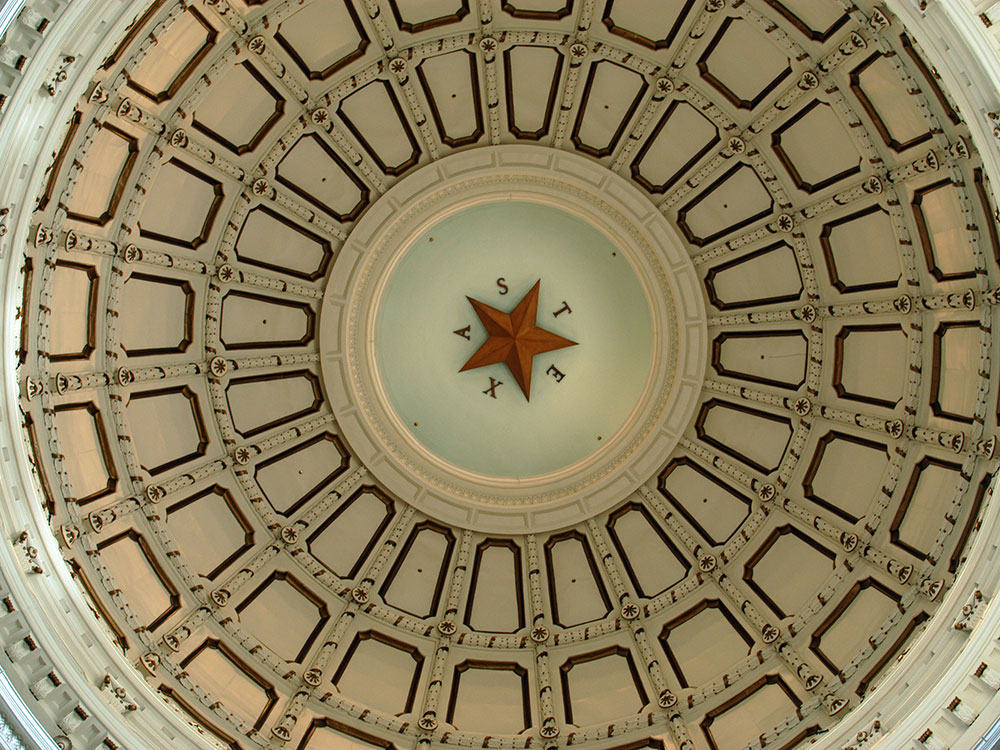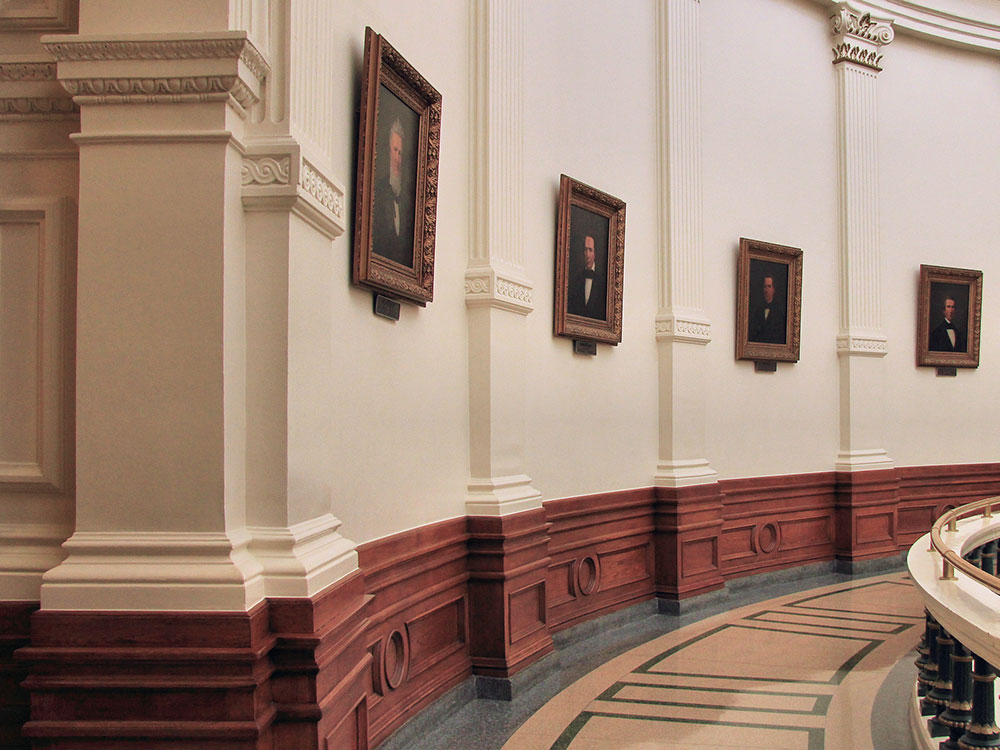Designed in 1881 The building Capitol is 302.64 feet (92.24 m) tall, making it the sixth-tallest state capitol and one of several taller than the United States Capitol and was added to the National Register of Historic Places and a National Historic Landmark
General Information
Open for self-touring Monday through Friday from 7am to 6pm Monday through Friday.
Guided tours of the Capitol are available on a limited basis between 9:30am and 4pm
Closed Easter Sunday, Thanksgiving Day, Christmas Eve, Christmas Day, and New Year's Day.
Head north on Congress Ave toward E 6th St. Turn right onto E 11th St.
The Texas State Capitol is the capitol building and seat of government of the state of Texas. Located in downtown Austin, the structure houses the offices and chambers of the Texas Legislature and of the Governor of Texas. Designed in 1881 by architect Elijah E. Myers, it was constructed from 1882 to 1888 under the direction of civil engineer Reuben Lindsay Walker. A $75 million underground extension was completed in 1993. The building was added to the National Register of Historic Places in 1970 and recognized as a National Historic Landmark in 1986.
The Texas State Capitol is 302.64 feet (92.24 m) tall, making it the sixth-tallest state capitol and one of several taller than the United States Capitol in Washington, D.C.
The Texas State Capitol and grounds are located on a hilltop overlooking downtown Austin, with the main entrance facing onto the Congress Avenue Historic District to the south, for which it forms a terminating vista. The northern edge of the capitol grounds lies four blocks south of the University of Texas at Austin.
The capitol is a roughly rectangular building with a four-story central block, symmetrical three-story wings extending to the east and west, and a dome rising from the center. It is built in an Italian Renaissance Revival style and modeled on the design of the United States Capitol, but with its exterior clad with local red granite. It contains 360,000 square feet (33,000 m2) of floor space (not including the Capitol Extension), more than any other state capitol building, and rests on a 2.25-acre (0.91 ha) footprint. The building has nearly 400 rooms and more than 900 windows.
The interior of the central portion forms an open rotunda beneath the dome. Massive cast-iron staircases flanking the rotunda connect the various levels of the building. The two chambers of the Texas Legislature (the Texas Senate and Texas House of Representatives) meet in large, double-height spaces in the centers of the two wings on the second floor, overlooked by public galleries on the third floor. The remainder of the building is filled with office space, courts, and archives; additional offices fill the underground extension.
The central rotunda is hung with portraits of all the past presidents of the Republic of Texas and governors of the State of Texas; the rotunda is also a whispering gallery. The south foyer features a large portrait of David Crockett, a painting depicting the surrender of General Santa Anna at the Battle of San Jacinto, and sculptures of Sam Houston and Stephen F. Austin made by Elisabet Ney. The Texas Confederate Museum was held in a room on the first floor from its opening in 1903 until 1920, when it was moved into the General Land Office Building (today the Capitol Visitors Center).
The Capitol building is surrounded by 22 acres (8.9 ha) of grounds scattered with statues and monuments. William Munro Johnson, civil engineer, was hired in 1888 to improve the appearance of the grounds. By the time the first monument, commemorating the Heroes of the Alamo, was installed in 1891, the major components of Johnson's plan were in place. These included a "Great Walk" of black and white diamond-patterned pavement shaded by trees. The four oldest monuments are the Heroes of the Alamo Monument (1891), Volunteer Firemen Monument (1896), Confederate Soldiers Monument (1903) and Terry's Texas Rangers Monument (1907), and these flank the tree-lined Great Walk. In the spring of 2013, ground was broken for the Texas Capitol Vietnam Veterans Monument; dedication took place on March 29, 2014.
This article uses material from the Wikipedia article "Texas State Capitol", which is released under the Creative Commons Attribution-Share-Alike License 3.0
